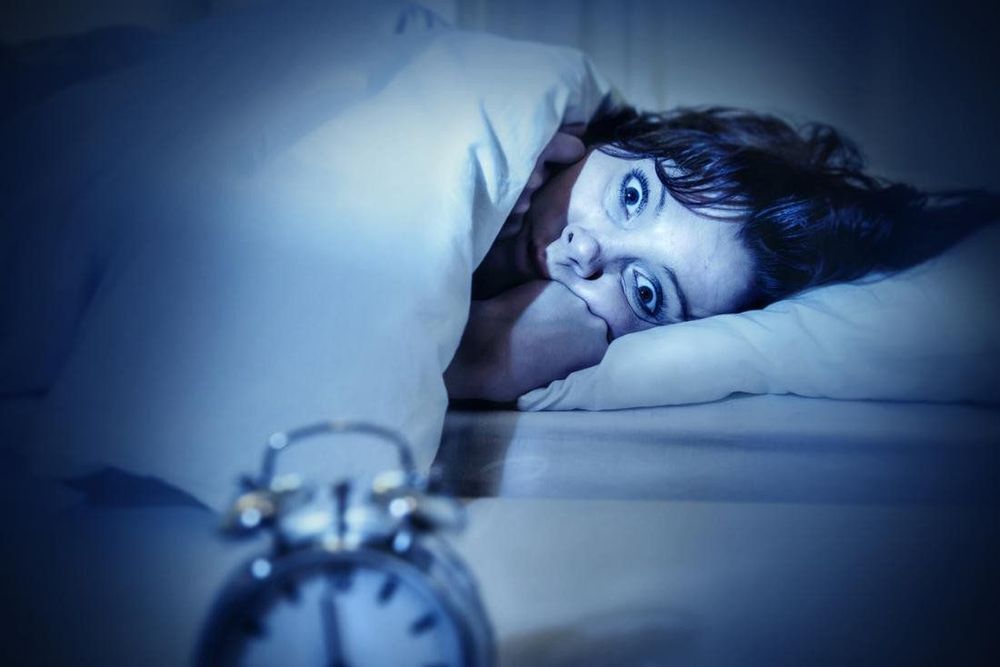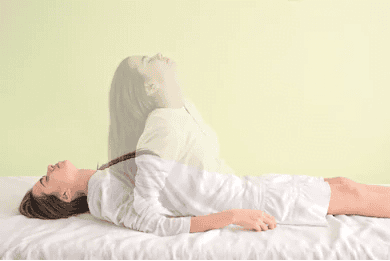This is an automatically translated article.
Sleep paralysis is a phenomenon of feeling conscious but unable to move for a very short time (about 1-2 minutes) when we fall asleep or just wake up. For the most part, sleep paralysis is a normal condition that doesn't happen often enough to cause serious health problems.
1. What is sleep paralysis?
Sleep paralysis is the feeling of being conscious but unable to move. Sleep paralysis is defined as a short-term loss of muscle control, known as atony, that occurs when you fall asleep or when you wake up, that is, the wake-awake transition. and vice versa.
During these transitions, you may feel:
Unable to move or make a sound for a few seconds to a few minutes even though you are still aware; Fear ; Some will feel pressure or a feeling of suffocation; Some may feel like someone is in the room. Sleep paralysis can be accompanied by other sleep disorders such as narcolepsy. It is a chronic sleep disorder that makes you very sleepy during the day due to a problem with the brain's ability to regulate sleep.
The cause of sleep paralysis is unknown, but may be related to:
Insomnia ; Intermittent sleeping habits eg due to shift work or plane delays, narcolepsy ; general anxiety disorder; Panic disorder ; Family history of sleep paralysis.

Liệt trong giấc ngủ có thể do tình trạng mất ngủ gây ra
2. When does sleep paralysis usually occur?
Sleep takes place in stages including:
The lull phase: Takes place within 5 - 10 minutes, at this time the body relaxes to go to sleep. Light sleep phase: The next 10-25 minutes. This stage accounts for 50% of the total sleep time and at this time the body will reduce its body temperature to 37 degrees Celsius. Deep and very deep sleep stage: accounted for about 20-30% of the total sleep time. This is the most important stage because this is the time for the body to recover from sleep. REM (Rapid Eye Movement) sleep: Dreaming is a stage of dynamic sleep. This stage accounts for 20% of sleep time in adults and 50% in children. In which, light sleep, deep sleep and very deep sleep is called NREM (Non Rapid Eye Movement) sleep. After the deep sleep phase, the body will return to light sleep and enter REM sleep. Sleep paralysis usually occurs at one of two stages of sleep:
The first time is when you are transitioning from the waking state to the sleep state, that is, falling asleep and it is called hypnagogic or predormital sleep paralysis. This happens because when you fall asleep, your body slowly relaxes, at this time, the ability to perceive often decreases and you often do not notice the change in the state of the body. However, if you are consciously aware during this stage, you will notice that you cannot move or talk. The second moment is when you are transitioning from sleep to wakefulness, which is when you wake up and it is called hypnopompic or postdormital sleep paralysis. Specifically, at the end of NREM, your sleep transitions into the REM phase. During this stage, your eyes move quickly and dreams begin to appear, but the rest of the body is still in a relaxed state, the muscles are not working. However, if your consciousness becomes aware before the REM cycle ends, you will notice that you cannot move or talk.
3. Is sleep paralysis dangerous?
Estimates of sleep paralysis vary, but researchers believe that about 8% of people have sleep paralysis at some point in their lives. However, data on the very frequency of relapses are not available.
Sleep paralysis can occur at any age, but the first symptoms usually appear in young children, adolescents or young adults (ages 7 to 25) and occur more often in people aged 20 to 30 years old.
In most cases, sleep paralysis is a normal condition that doesn't happen often enough to cause serious health problems. However, an estimated 10% of people experience recurrent or more uncomfortable episodes that make sleep paralysis particularly bothersome. As a result, they may develop negative thoughts about going to bed, reduce time spent sleeping, or cause anxiety around bedtime that makes it harder for them to fall asleep. A lack of sleep can lead to excessive sleepiness and other health consequences.

Người mắc tình trạng liệt trong giấc ngủ cần xem lại chế độ sinh hoạt
4. What should you do to prevent sleep paralysis?
There is no specific treatment for sleep paralysis. To prevent sleep paralysis, you should:
Try to maintain a regular sleep time of 6 to 8 hours a day and fix the time to go to bed and wake up; Exercise regularly but do not exercise for 4 hours before bedtime; Do not overeat, smoke or drink alcohol, beer or coffee right before going to bed; Do not sleep on your back as this makes you more likely to become paralyzed during sleep; Avoid napping after 3 p.m. and avoid napping for more than 90 minutes; Stop using phones and other electronic devices one hour before bedtime and keep them away from your bed while you sleep. As such, sleep paralysis can occur in normal sleepers and is a fairly common occurrence. Sleep paralysis has also been linked to a number of conditions, such as increased stress, excessive alcohol consumption, sleep deprivation, and narcolepsy. Usually, sleep paralysis is not a sign of a serious illness. Make sure you get enough sleep and have healthy sleep habits and lifestyles to prevent sleep paralysis.
Please dial HOTLINE for more information or register for an appointment HERE. Download MyVinmec app to make appointments faster and to manage your bookings easily.













